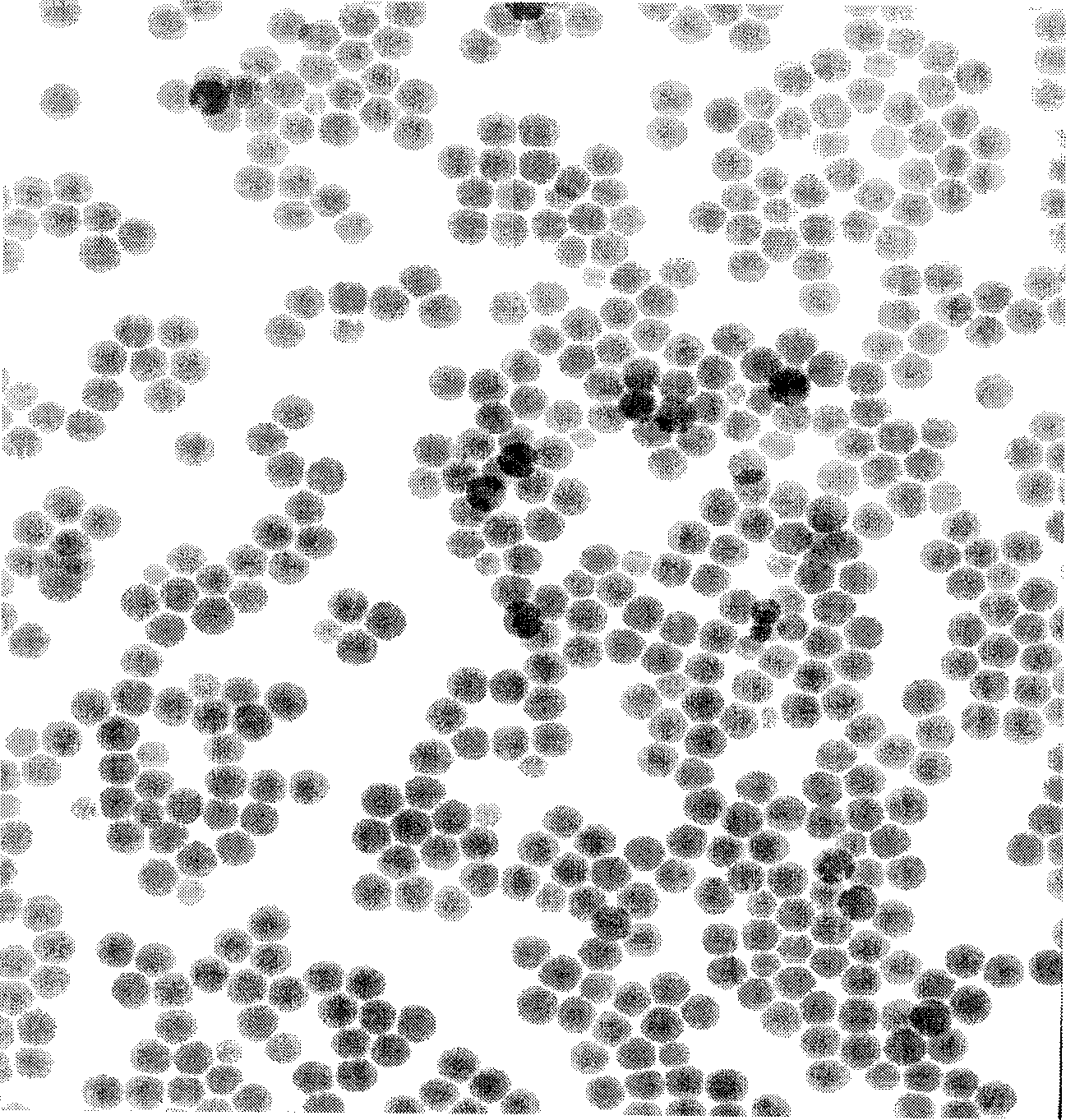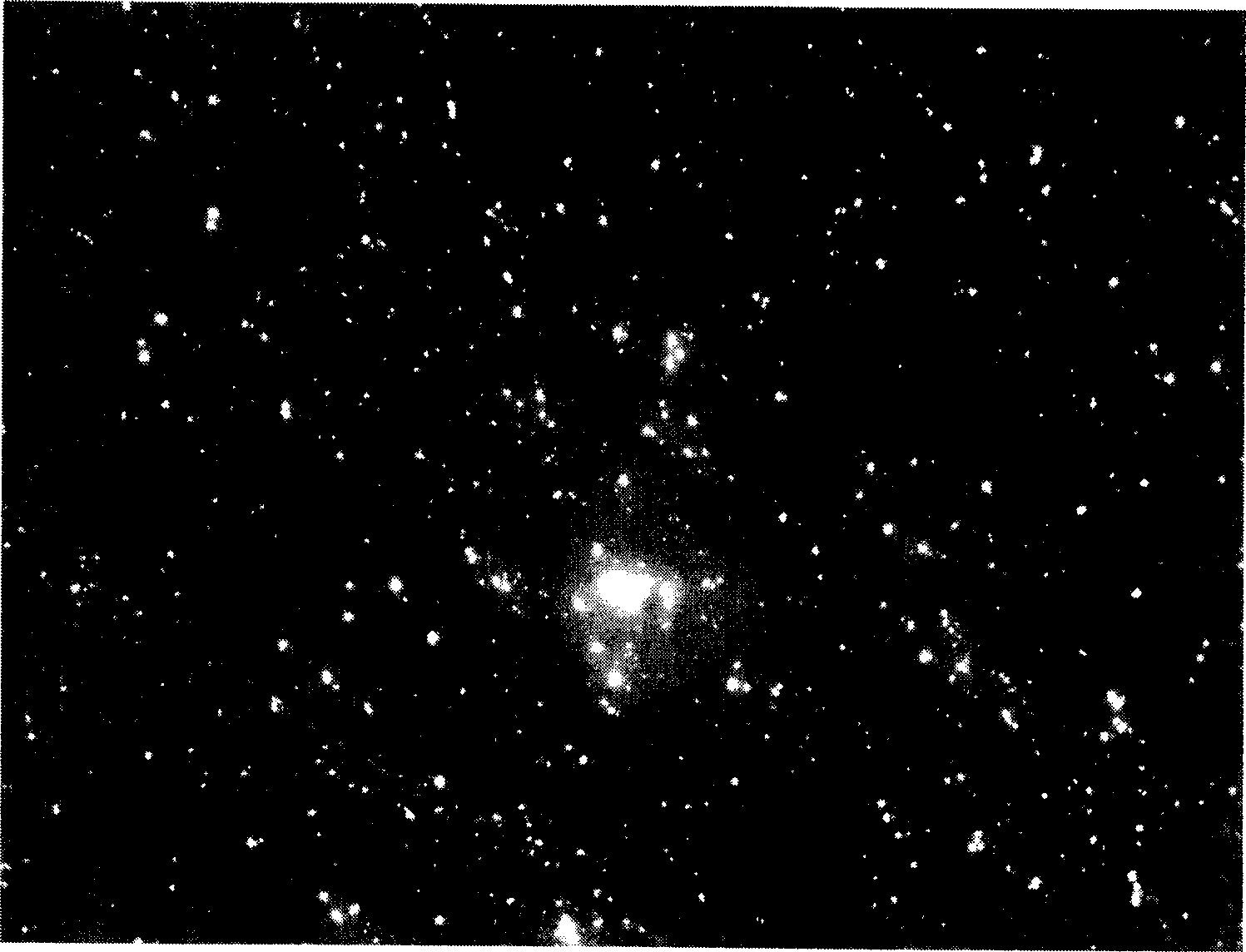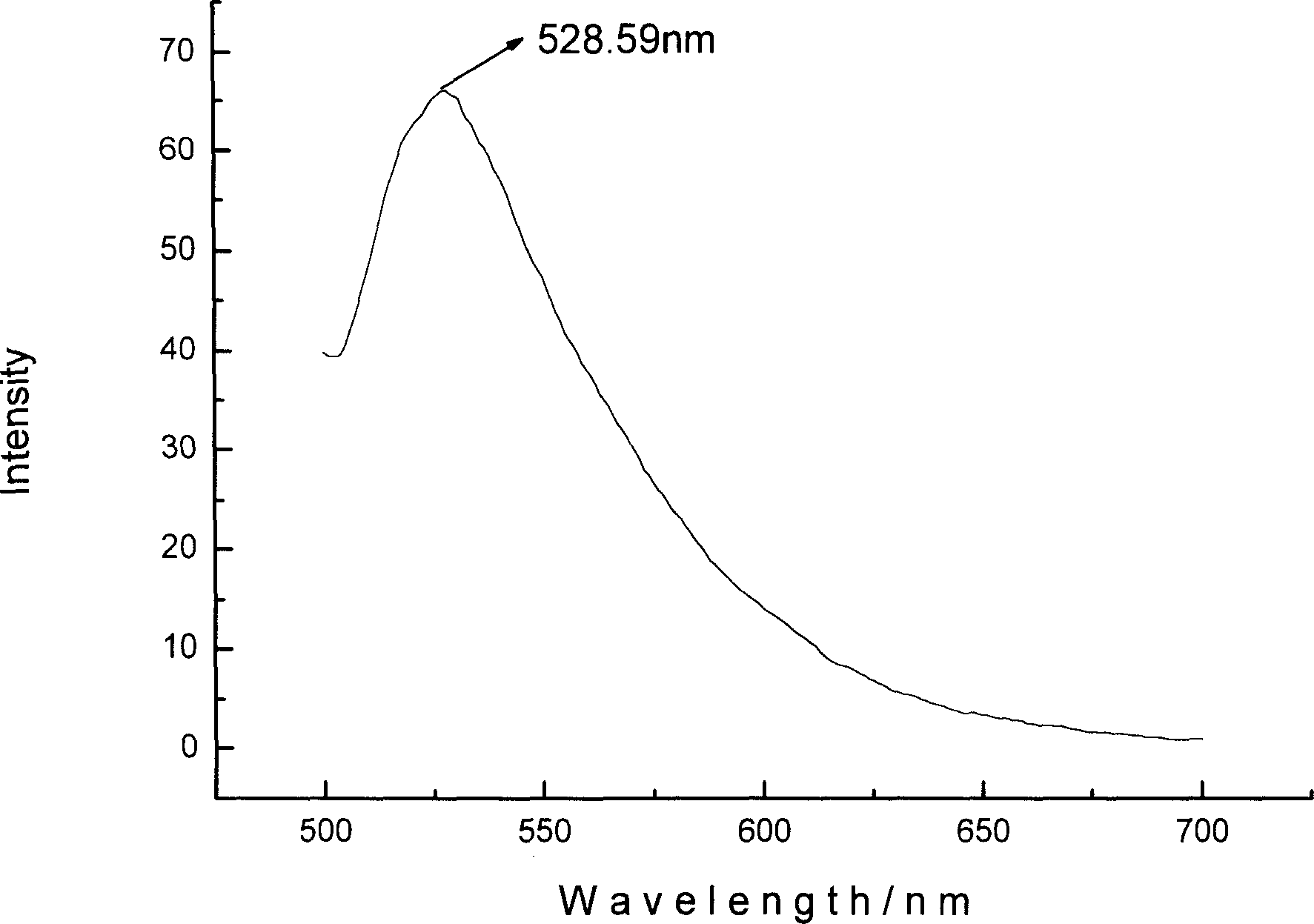Fluorescent nano-particle with surface biological function, its production and use
A biological functionalization and fluorescent nanotechnology, which is applied in biological testing, fluorescence/phosphorescence, material inspection products, etc., can solve the problems that fluorescent nanomaterials have the function of binding biomolecules at the same time, and achieve trace detection and trace reaction. , smooth surface and uniform particle distribution
- Summary
- Abstract
- Description
- Claims
- Application Information
AI Technical Summary
Problems solved by technology
Method used
Image
Examples
Embodiment 1
[0041] Preparation Method 1 of Core-shell Fluorescent Nanoparticles
[0042] Mix isopropanol and water uniformly at a ratio of 5:1, and sonicate for 5 minutes. Weigh 0.1-0.8 mg of fluorescent substance fluorescein isothiocyanate FITC, configure it into an aqueous solution, and process it ultrasonically for 10 min. Pour the upper clear layer into a three-necked flask, and keep stirring to keep it in a dispersed state. Take 1mL of concentrated ammonia water and slowly add it into the constantly stirring solution system. Then take 1-3 mL of tetraethyl orthosilicate, and also slowly add it into the constantly stirring solution system. The system was reacted at room temperature for 3 to 5 hours. The reaction product was poured out, and the particles were washed 3 to 5 times with twice distilled water. The cleaned particles were vacuum-dried for 5 hours at a temperature of 20-50° C., and the particles were collected for future use. From figure 1 We can see that the silica has ...
Embodiment 2
[0044] Preparation Method 2 of Core-shell Fluorescent Nanoparticles
[0045] Mix TritonX-100, n-hexanol and cyclohexane uniformly at a ratio of 1:2:5 to form a transparent and stable microemulsion system. Put the above-mentioned microemulsion system in ultrasonic treatment for 30-60 minutes, add 0.5 mg of fluorescent substance fluorescein isothiocyanate FITC to it, use ultrasonic treatment for 6 minutes, take out the supernatant liquid and pour it into a three-necked flask, stir for 30 minutes to make It's even. Take 1mL of concentrated ammonia water and dilute it with 2mL double-distilled water, slowly add it into the microemulsion under constant stirring after 30 minutes, and keep stirring for 30 minutes to disperse the ammonia water evenly in the microemulsion. After 1 hour, 1-3 mL of tetraethyl orthosilicate was added dropwise to the microemulsion, while stirring continuously for 10 hours, and the temperature of the system was kept between 15-30°C. Add acetone to the sys...
Embodiment 3
[0047] Amino modification on the surface of fluorescent nanoparticles
[0048] Take 20 mg of the fluorescent nanoparticles prepared in Example 1 or 2, add 30-50 mL of methanol and glycerol in a 5:3 mixture, and use ultrasonic treatment for 20-60 minutes; weigh 1-3 mL of AEAPS [N-(2-aminoethyl)-3-aminopropyltrimethoxysilane], ultrasonic treatment for 10 to 60 minutes; mix the two solutions evenly, react at 60°C for 5 hours, and then take out The particles were washed with methanol for 3 times, followed by vacuum drying at 40-80° C. for 2 hours, and the particles were collected to obtain biofunctionalized fluorescent nanoparticles with amino groups modified on the surface.
PUM
 Login to View More
Login to View More Abstract
Description
Claims
Application Information
 Login to View More
Login to View More - R&D
- Intellectual Property
- Life Sciences
- Materials
- Tech Scout
- Unparalleled Data Quality
- Higher Quality Content
- 60% Fewer Hallucinations
Browse by: Latest US Patents, China's latest patents, Technical Efficacy Thesaurus, Application Domain, Technology Topic, Popular Technical Reports.
© 2025 PatSnap. All rights reserved.Legal|Privacy policy|Modern Slavery Act Transparency Statement|Sitemap|About US| Contact US: help@patsnap.com



